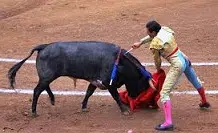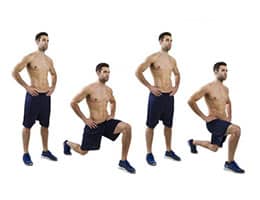 The notion of thrust is used to name the attack made with the tip of a rapier (a type of sword). By extension, the blow that is carried out with the end of any knife or pointed object is called a thrust.
The notion of thrust is used to name the attack made with the tip of a rapier (a type of sword). By extension, the blow that is carried out with the end of any knife or pointed object is called a thrust.
For example: “The criminal stabbed the victim in the abdomen, who is hospitalized,” “The stab in the chest caused profuse bleeding,” “A prisoner lost his life in the San Mateo prison after receiving “a deadly thrust.”
The idea of a lunge is also used to name the wound that produces an attack such as those already mentioned: “The doctor told me that I should monitor the lunge every day to confirm that it does not become infected,” “The lunge left a scar of four centimeters on the back” , “That young man needs urgent attention! "He has a stab in his belly that won't stop bleeding."
In the field of fencing , the thrust is the attack that fencers perform, trying to touch the opponent with the foil, epee or saber. It is called a fist lunge when the lunge is applied with a movement of the arm, without moving the body.
The thrust also appears in the field of bullfighting when the bullfighter finishes off the bull by stabbing it with the rapier. It is, therefore, the final blow that the animal receives and causes death.
As is often the case with many other words in our language, the meanings of thrust are varied and not all of them respond to physical phenomena, such as a blow, but it can also be understood in a figurative sense. In colloquial language, for example, the fact, situation or action that allows something to be finished or closed is called a lunge.
Let's look at some sentences in which the term stab should not be understood in a literal sense, but rather refers to a difficult and definitive situation: “The team's new defeat was the stab that ended their aspirations in the championship,” “The creation of “A constituent assembly is a blow to the democratic regime.”
 In the field of gymnastics, the word lunge is used to refer to an exercise that serves to strengthen various parts of the body, such as the glutes, calves, quadriceps, trunk and hamstrings. Its procedure is easy, does not carry significant risks and offers results in the short term.
In the field of gymnastics, the word lunge is used to refer to an exercise that serves to strengthen various parts of the body, such as the glutes, calves, quadriceps, trunk and hamstrings. Its procedure is easy, does not carry significant risks and offers results in the short term.
To do lunges we must begin by standing up straight, separating our feet until they coincide with the ends of our hips and leaving our shoulders relaxed. At the same time, it is important that the spine is straight throughout the entire exercise, for which we can help ourselves by flexing the abdominal muscles .
Starting from this position , we must lift one foot and move it forward while we bend the knee, as if we were walking. When placing it back on the ground, we must start with the heel and tilt the body until the knee of the other leg touches the floor. When reaching this position, it is important to remember that the back should not be rounded; Furthermore, the knee of the foot with which we have advanced should not end in front of it, but rather should form a straight line perpendicular to the ground with the heel.
This is the point at which the exercise returns to the beginning to allow for repetitions. To do this, it is necessary to push up and back with the foot that we have brought forward, and bring the body to the initial position, trying to maintain balance. It is recommended to do the same number of movements with each side per session.
